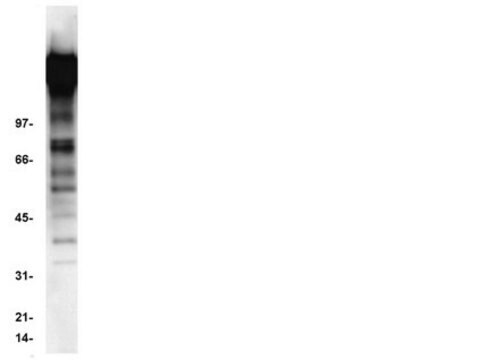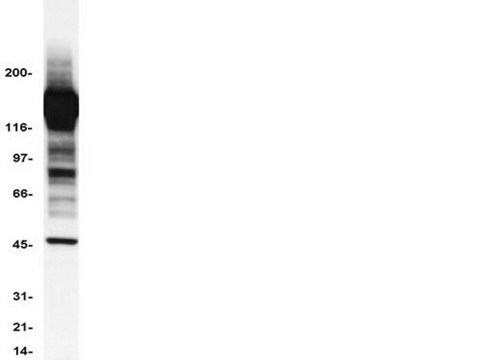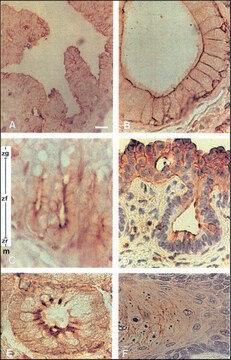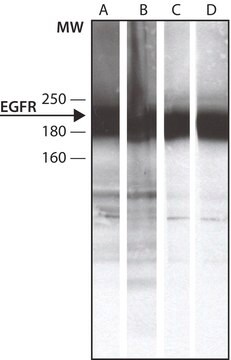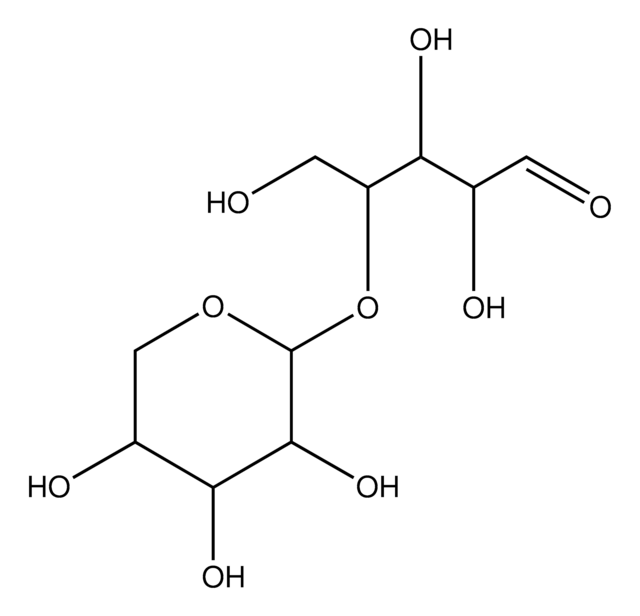16-103
Anti-Phosphotyrosine Antibody, clone 4G10®, Biotin Conjugate
clone 4G10®, Upstate®, from mouse
Synonym(s):
4G10 Biotin Antibody, Biotinylated Anti-Phosphotyrosine, Clone 4G10 Anti-Phosphotyrosine
About This Item
Recommended Products
biological source
mouse
Quality Level
conjugate
biotin conjugate
antibody form
purified antibody
antibody product type
primary antibodies
clone
4G10®, monoclonal
species reactivity
human
species reactivity (predicted by homology)
all
manufacturer/tradename
Upstate®
technique(s)
immunocytochemistry: suitable
immunoprecipitation (IP): suitable
western blot: suitable
isotype
IgG2bκ
shipped in
wet ice
target post-translational modification
phosphorylation (pTyr)
Gene Information
human ... PID1(55022)
General description
Description
Anti-phosphotyrosine monoclonal antibody, clone 4G10 (cat. # 05-321), cross-linked to biotin.
Specificity
Immunogen
Application
4 μg of a previous lot, used in conjunction with Streptavidin, agarose conjugate (Catalog # 16-126), immunoprecipitated phosphotyrosine containing proteins from a lysate of EGFstimulated A431 cells.
Note: To preserve phosphotyrosine, add 0.2 mM sodium orthovanadate to the lysis buffer.
Immunocytochemistry:
5-10 μg/mL of a previous lot gave positive immunostaining of EGF-stimulated A431 cells that had been fixed with ethanol:acetic acid [1:1].
Application Notes
For use in applications in which a biotin conjugate is advantageous, such as WB and IC.
Signaling
General Post-translation Modification
Quality
Western Blot Analysis:
1:500 dilution of this lot detected Tyrosine phosphorylated proteins on 10 μg of EGF treated A431 lysates.
Target description
Physical form
Storage and Stability
Analysis Note
Pervanadate-treated human A431 cell extracts or EGF-treated human A431 cells
Other Notes
Legal Information
Disclaimer
Not finding the right product?
Try our Product Selector Tool.
Storage Class Code
12 - Non Combustible Liquids
WGK
WGK 2
Flash Point(F)
Not applicable
Flash Point(C)
Not applicable
Certificates of Analysis (COA)
Search for Certificates of Analysis (COA) by entering the products Lot/Batch Number. Lot and Batch Numbers can be found on a product’s label following the words ‘Lot’ or ‘Batch’.
Already Own This Product?
Find documentation for the products that you have recently purchased in the Document Library.
Our team of scientists has experience in all areas of research including Life Science, Material Science, Chemical Synthesis, Chromatography, Analytical and many others.
Contact Technical Service
